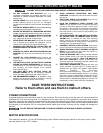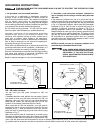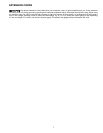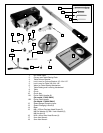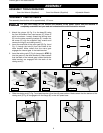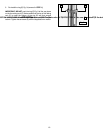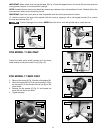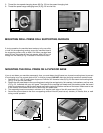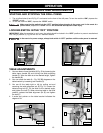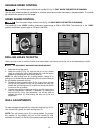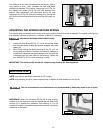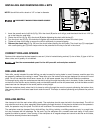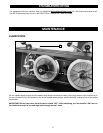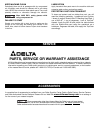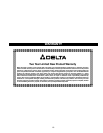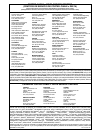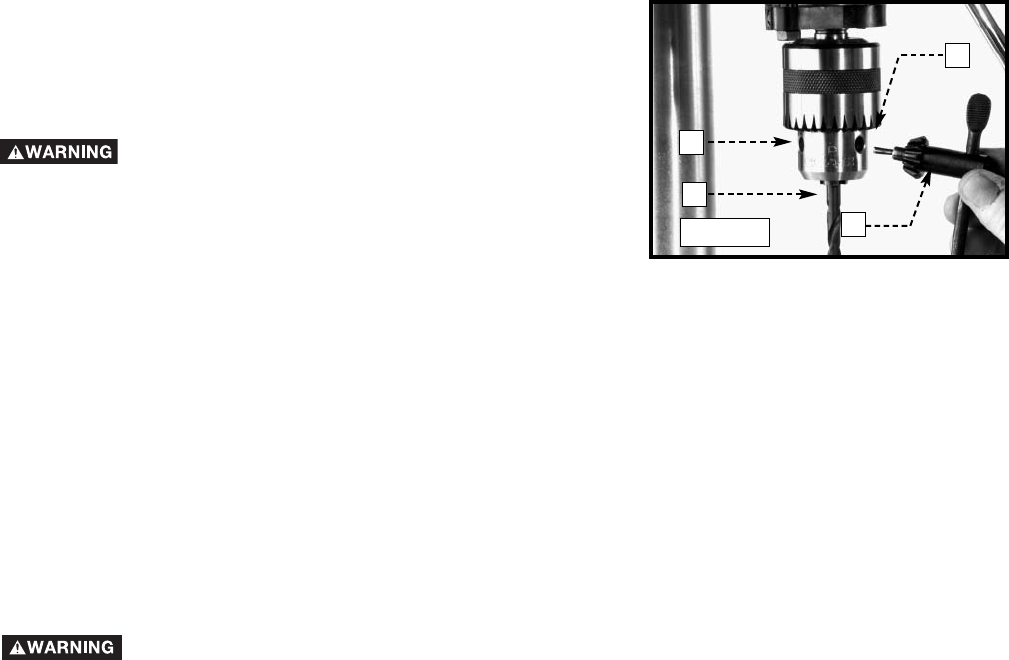
16
Fig. 39
A
B
D
C
NOTE: Use drill bits with a shank of 1/2" or less in diameter.
DISCONNECT MACHINE FROM POWER SOURCE.
1. Insert the smooth end of drill bit (A) Fig. 39 in the chuck (B) as far as it will go, and then back the bit out 1/16" (or
up to the flutes for small bits).
2. Center the drill bit (A) Fig. 39 in the chuck (B) before tightening the chuck with the key (C).
3. Turn the chuck key (C) Fig. 39 clockwise to tighten and counterclockwise to loosen the chuck jaws.
4. Tighten all three chuck jaws to secure the drill bit sufficiently to prevent slipping.
5. Remove the chuck key (C) Fig. 39 from the chuck before starting the drill press. The chuck key (C) is equipped
with a self-ejecting pin (D) which helps minimize the potential for the key to be left in the chuck.
INSTALLING AND REMOVING DRILL BITS
CORRECT DRILLING SPEEDS
Factors which determine the best speed to use are 1) kind of material being worked, 2) size of hole, 3) type of drill or
other cutter, and 4) quality of cut desired.
Use the recommended speed for the drill press bit and workpiece material.
DRILLING WOOD
Twist drills, usually intended for metal drilling, can also be used for boring holes in wood. However, machine spur bits
are generally preferred for working in wood. These bits cut a flat bottom hole and are designed for removal of wood
chips. Do not use hand bits which have a screw tip. At drill press speeds, they will lift and rotate the workpiece.
For through boring, align the workpiece so that the bit will go through the center hole in the table. Scribe a vertical line
on the front of the column and a matching mark on the table bracket and the drill press head, so that the table and drill
press head can be clamped in the center position at any height.
Feed the workpiece slowly when the bit is close to cutting through the wood to prevent splintering the bottom face.
Use a scrap piece of wood as a base block under the work. This helps to reduce splintering and protects the point of
the bit.
DRILLING METAL
Use clamps to hold the work when drilling metal. The workpiece should never be held in the bare hand. The drill bit
may seize the work at any time, especially when breaking through the stock. If the piece is whirled out of the operator's
hand, the operator may be injured. The drill bit will be broken if the workpiece strikes the column.
The workpiece must be clamped firmly while drilling. Any tilting, twisting, or shifting results not only in a rough hole,
but also increases drill bit breakage. For flat work, lay the workpiece on a wooden base and clamp it firmly down
against the table to prevent it from turning. If the workpiece is of irregular shape and cannot be laid flat on the table,
it should be securely blocked and clamped.



